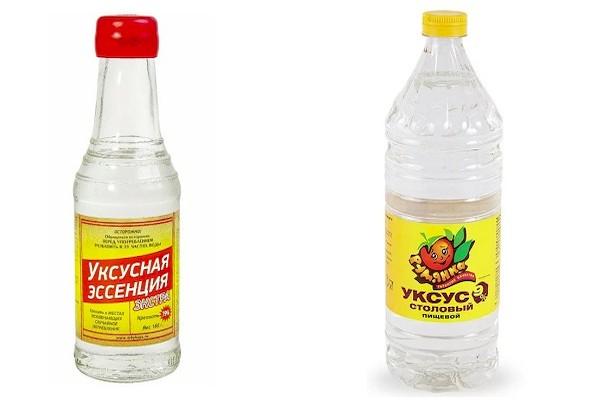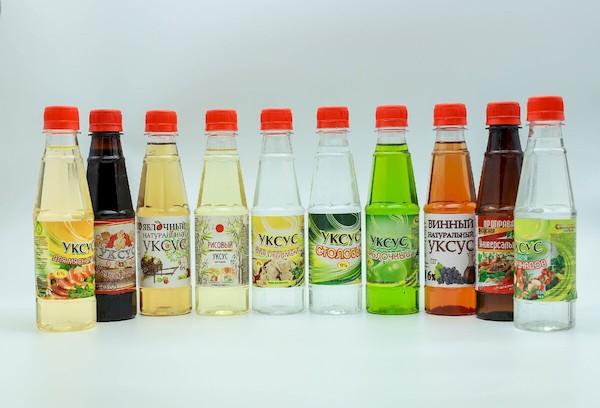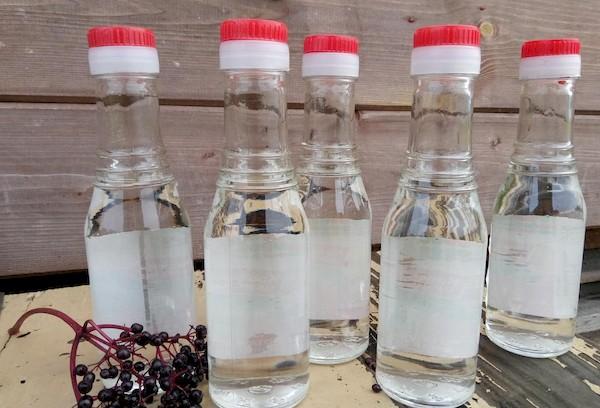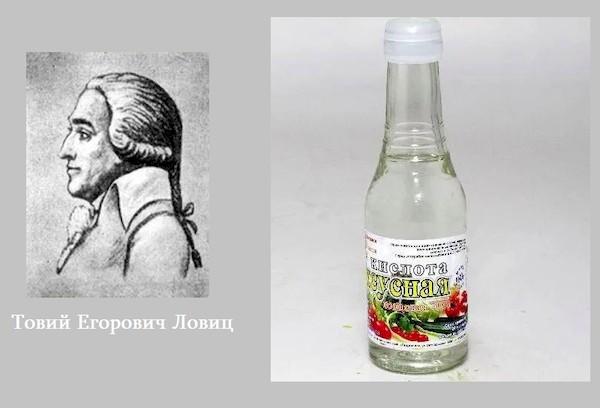What is the difference between vinegar and vinegar essence: important differences
The main difference between vinegar and vinegar essence is the percentage of acid. The difference is colossal: in ordinary white table vinegar there is 9% acid, and in essence it is 70-80%. Both products have a wide range of, but often different, uses.
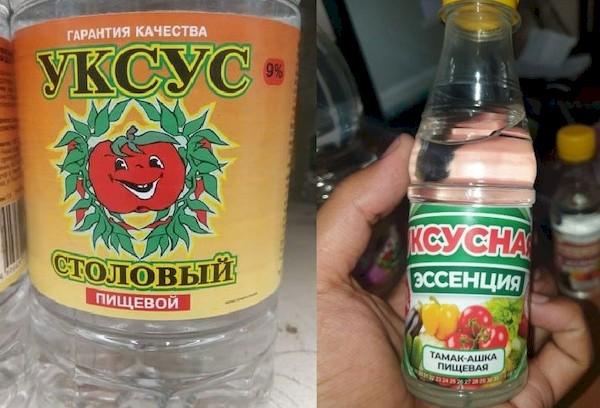
How to distinguish vinegar from vinegar essence?
Both vinegar and vinegar essence are an aqueous solution of acetic acid. It is important to distinguish one from the other.
Vinegar essence is a dangerous substance that causes chemical burns. Even vapors are dangerous, not to mention direct contact with skin and mucous membranes!
The liquids often look the same and are transparent. It is correct to keep them in their original packaging with a label so as not to mix them up. If the label is lost, you can conduct a test that will help you quickly determine whether the bottle contains vinegar or essence. Need to:
- Pour 1 teaspoon of the substance into a glass.
- Add 60-70 ml of water.
- Stir and taste.
- When using essence, the solution will turn out to be very acidic, like 6% vinegar.
- If the bottle contained table vinegar, the liquid in the glass will be slightly sour.
Differences between vinegar essence and vinegar in the photo:
Comparison in the table:
| Vinegar | Vinegar essence | |
| Standard concentration of acetic acid | 6-9% (from 3 to 15%) | 70%, 80% |
| Natural or synthetic? | natural or synthetic | predominantly synthetic |
| Color | transparent or shades of yellow, red, brown | transparent |
| Smell | strong vinegar or vinegar-wine, vinegar-apple, etc. | sharp, acrid, vinegary |
| Application | preparation of sauces, marinades, drinks;
food canning; removing stains from clothes; mold removal; elimination of unpleasant odor; as a cleaning agent.
|
in cooking: preparing dishes and vinegar of the required concentration, canning vegetables, fruits, fish, meat;
food production; production of polyethylene, plexiglass; production of paints and varnishes; synthesis of aspirin and other drugs; synthesis of fragrant substances in cosmetics and perfumery; weed control; production of insecticides; removal of limescale; rust removal; cleaning and elimination of unpleasant odors (diluted). |
| pros | diversity of species;
easy to use; safe; you can choose a natural product. |
you can obtain different concentrations of acetic acid;
takes up little space during storage; a large number of applications. |
| Minuses | the acid concentration may be insufficient;
takes up a lot of space when used in large quantities |
caustic, dangerous substance;
expensive product. |
Vinegar - what is it?
Vinegar is a product with a significant content of acetic acid, widely used in cooking as a seasoning.
There are two types:
- Synthetic vinegar. It is made by diluting the essence with water to obtain an acid concentration of 3-15%. Has a specific pungent odor. It can be flavored.
- Natural. It is obtained by the oxidation of ethyl alcohol by acetic acid bacteria.It is often prepared with the addition of apple, grape, and less often other juices, fermented wine materials, whey, plant extracts (thyme, garlic, tarragon, pepper, oregano, etc.). Often contains up to 6% acid, has a colored tint and smells nicer.
In Russia, out of 50 vinegar factories, only 15 produce natural vinegar. It is not used for technical purposes, but only for food purposes.
Vinegar, obtained from the fermentation of wine, has been known to mankind since time immemorial. In the 3rd century. BC e. The Greek scientist Theophrastus described its effect on metals, as a result of which lead white and green pigment (copper acetate) were obtained. In ancient Rome, the drink sapa was made. The sour wine was kept in a lead container, which caused the formation of sweet lead acetate (the so-called lead sugar). Glanders lovers suffered from chronic lead poisoning.
Interesting fact. Acetic acid is formed in living organisms, including humans, during carbohydrate metabolism and during the disposal of alcohol.
What is vinegar essence?
Acetic essence is usually called an aqueous solution of acetic acid 80%. Sometimes essence is called food grade acetic acid with a concentration of 70 percent. Both products are highly concentrated.
The basis of the essence is simple carboxylic (acetic) acid, a colorless acidic liquid with a sharp irritating odor. It is unlimitedly soluble in water and miscible with most solvents.
100% acetic acid is called glacial acid due to its ability to turn into an ice-like mass when frozen. The method for its preparation was discovered back in 1789 by the Russian chemist T. E. Lovitz. In 1847, the German chemist A.Kolbe was the first to succeed in obtaining acetic acid from inorganic materials through complex chemical transformations of carbon disulfide. In the 19th-20th centuries. The main production was carried out by distillation of wood.
Acetic acid has a hazard class 3 (moderately hazardous substance). Solutions with an acid concentration of 30% or higher are considered dangerous.
Question answer
Is it possible to replace the essence with vinegar in a recipe?
When canning - yes, not always in other recipes. Sometimes vinegar essence is indicated in a recipe to achieve maximum acidity with a minimum volume of liquid. If you replace the essence with vinegar (adding more of it), the liquid component will increase 4-6 times. This can significantly affect the final result.
What are the safety precautions when using vinegar essence?
The product must be stored in a labeled container out of the reach of children and pets. Do not eat undiluted. When using, avoid inhaling vapors, keep the container away from your face, avoid getting the concentrate on your skin, and handle with care. If the essence gets on your body or in your eyes, you should immediately rinse the area with water and call an ambulance.
To summarize, vinegars are called 3-15% solutions of acetic acid, essence is a solution with a substance concentration of 70-80%. The essence is a dangerous substance to keep at home and is prohibited for free sale in some countries. It is mainly used in industry. Soviet housewives often used it for preservation. A small bottle was enough to prepare a large amount of food for the winter.Today, 9% table vinegar is successfully used for the same purpose (the difference is only in the dosage), and for the preparation of sauces and salads - wine, balsamic, rice, apple and other tasty and healthy vinegars.
